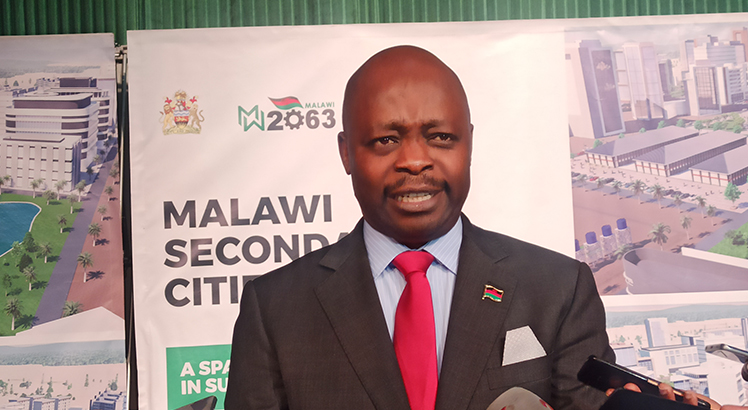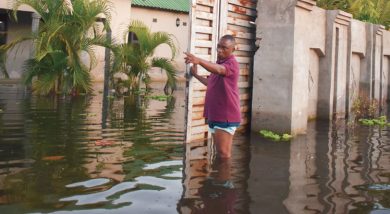Malawi launches new cities plan
To facilitate sustainable economic growth and promote broad social welfare gains for citizens, government yesterday launched the Malawi Secondary Cities Plan (MSCP).
Speaking during the launch in Lilongwe, Minister of Local Government Blessings Chinsinga said effects of population growth have impacted greatly on citizens’ livelihoods, leading to proliferation of slums, insufficient service delivery, congestion on roads, pollution and water problems, security concerns and environmental degradation in existing cities.
He said: “The Malawi Secondary Cities Plan augurs well with the decentralisation policy reforms that embrace the entrenchment of a democratic developmental local government system in Malawi.
“The urbanisation envisaged is to be linked to productive investments such as mining, agro industries and thriving tourism hubs. Therefore, as we thrive for world class cities, we need to have more than four cities so that we do not leave anyone behind in our development aspirations.”

The initiative is touted as key to propelling urbanisation as articulated in Sustainable Development Goal Number 11, which entails making cities and human settlements inclusive, safe, resilient and sustainable while the Secondary Cities Plan is guided by the Malawi 2063’s Malawi Implementation Plan (MIP-1) urbanisation pillar.
The plan, which government said will be implemented with the involvement of State and non-State actors, seeks to develop eight secondary cities in Karonga, Nkhata Bay, Kasungu, Chipoka in Salima, Mangochi, Liwonde in Machinga, Luchenza in Thyolo and Bangula in Nsanje on a pilot phase.
Chinsinga said the population of major cities will have increased by 18.3 percent between 2019 and 2025.
He said: “This means the population of Malawi’s major cities, which was projected at 3.3 million in June 2019, is projected to reach 4.2 million by 2023.”
In his statement, Minister of Lands Sam Kawale said his ministry will ensure that land is made available for all the developments under the initiative.
He also indicated his ministry’s commitment to prepare masterplans that are modern, futuristic and attractive to both local and international investors while upholding high standards of development to have cities that are clean, orderly and create employment.
During the launch, several institutions showcased their projects that are in line with the plan.
The projects include Goshen City in Monkey Bay by Shepherd Bushiri Investments, the Chipoka Port Fisheries and Aquaculture Infrastructure Development Project, the establishment of fish feed manufacturing plants for lakeshore cities and the development of the Bangula logistics hub by Malawi Agricultural and Industrial Investment Corporation (Maiic).
Speaking on behalf of private sector investors, Prophet Shepherd Bushiri said they are investing $50 million (about K50.1 billion) on the Goshen City project in the first and second phases and that phase one will finish December this year.
He said the project has created 4 000 jobs and they envisage 100 000 people will be employed going forward as the project has several phases to come.
Bushiri cited road infrastructure as a major challenge facing the Goshen City project as most roads in the area are dilapidated to move construction materials.
On his part, National Planning Commission board chairperson Richard Mkandawire, whose agency is driving the initiative, said the choice of the eight pilot secondary cities, as a priority, was largely based on their potential to urbanise, levels of connectivity and the existing economic opportunities for inclusive wealth creation in those localities.
He said developing the secondary cities around a sustainable economic activity such as tourism, mining, commercialised agriculture, logistics and transport will distinguish them from the previous initiatives.
Said Mkandawire: “The selected cities are pilot cities, but there will be satellite towns that will still be supported to develop further, especially around the existing main four cities.”
The MSCP is the result of a three-year engagement with multiple stakeholders from government officials to private organisations and institutions and comes to support the Malawi2063 Vision which includes long and medium-term development plans.






One Comment